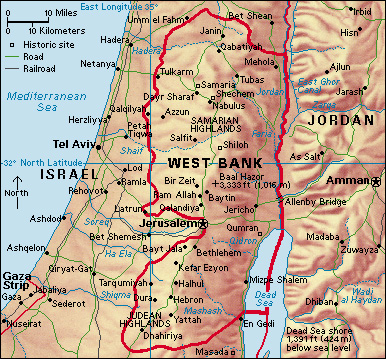Masada, << muh SAHD uh or muh SAYD uh, >> was a historic Jewish fortress that stood on a huge rock in Judea (now southern Israel). The rock is also called Masada, the Hebrew word for mountain fortress. According to Jewish tradition, 960 Jewish patriots killed themselves at Masada in A.D. 73. They committed suicide to avoid having to surrender to Roman troops. For many Israelis, this devotion to liberty is a national symbol called the “spirit of Masada.”
The rock is about 20 miles (32 kilometers) southeast of Hebron. Masada has cliffs that rise 1,400 feet (427 meters). The top of the rock is flat and measures about 1,900 feet (579 meters) long and 650 feet (198 meters) wide.

The Jewish leader Jonathan established the fortress during the Hasmonean Revolt (167-142 B.C.). During that period, the Jews successfully fought for their independence from the Syrians. In 63 B.C., the Romans gained control of Judea. Herod the Great, who was appointed king of Judea by the Romans in 40 B.C., reinforced the fortress and also built two palaces on the rock.
Jewish patriots called Zealots captured Masada in A.D. 66, when the Roman governor Gessius Florus ruled Judea. According to tradition, the Jews burned the camp and committed suicide in A.D. 73, just before the Romans recaptured the fortress. Only two women and five children remained alive. Byzantine monks settled briefly on Masada during the 400’s and 500’s.
From 1963 to 1965, an archaeological expedition headed by Yigael Yadin of Israel discovered various ruins of ancient Masada, including Herod’s palaces. The expedition also found armor, Biblical and other scrolls, coins, ritual baths, and a synagogue. Today, many tourists and Israeli citizens visit Masada.
